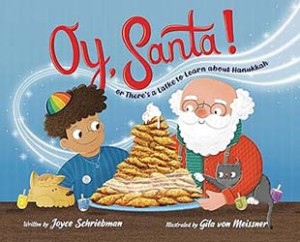From generation to generation, in any and every culture, artists offer new perspectives on timeless themes. The most widely and intensively explored holiday in the Jewish tradition has been Passover; traditionally, artists have infused the holiday’s rituals with meaning by beautifying objects associated with it. The Art of Passover offers a sampling of such work from over the last seven hundred years, providing readers with an overview of the holiday’s ritual objects, such as Haggadot, matzah bags, and seder plates. The items presented range from numerous geographic locales in which Jews settled over the past millennium, although it heavily emphasizes Central and Eastern Europe.
The book is a reprint of a publication originally issued in 1994. It appears much like an exhibition catalog, though no museum exhibition accompanied this assembly of fine artistic pieces. Each of the forty-eight items represented is given a two-page spread, with text in two columns appearing on the left-hand page, and photo reproduction of the item on the right-hand page. Like extended exhibition labels, the text provides background on rituals, cultures, artists, and provenance, as well as physical descriptions to help contextualize the accompanying photos. In addition, Parnes, the original compiler of the items in the book, composed a short preface, while Michaels and Goldstein, curators at Yeshiva University Museum and the volume’s primary authors, provided a nine-page introduction.
The entries are arranged idiosyncratically, alternating according to the material type of some objects and the concept of others. The first fifteen entries show images of manuscripts and printed books that relate to the Exodus or to the seder. The accompanying texts on their own are informative, but several items appear unnecessarily. Concurrently, innovative and artistic Haggadot printed during the sixteenth, seventeenth, and eighteenth centuries are noticeably absent.
The Art of Passover proceeds with a handful of textiles, including matzah bags, towels, a banner from Alsace, and a nineteenth-century afikomen pouch from China. The next twelve items are seder plates, almost all of which stem from nineteenth-century Ashkenazic communities. Most notably, there is a plate from Spain dated to 1480 and another created in Theresienstadt in 1944, both of which speak to the perpetual resonance of Passover. The book also includes several examples of drinking receptacles, and concludes with visual pieces, including paintings by Chagall and Rubin, that celebrate the holiday or something tangentially related.
Taken individually, the items displayed and discussed in this volume on Passover are informative and evocative. Michaels’s and Goldstein’s research is reliable and the photos are nice, if not extraordinary. This reasonably priced coffee-table book would serve as an excellent holiday gift.
Related Content:
- Molly Birnbaum: The Scent of Passover
- Rachel Cantor: Passover in Pakistan
- Aviva Kanoff: Passover for Non-Bolivians
David Sclar studies Jewish history and culture in the early modern period. He earned his doctorate at the Graduate Center of the City University of New York, and has held fellowships at Harvard University, Princeton University, the University of Oxford, the University of Toronto, New York University, and the Center for Jewish History. He worked for several years in the Special Collections of the Library of the Jewish Theological Seminary, and presently teaches history at the Frisch School.





